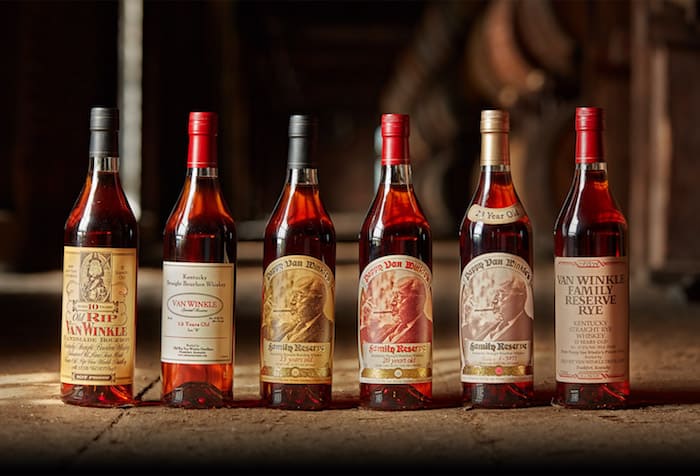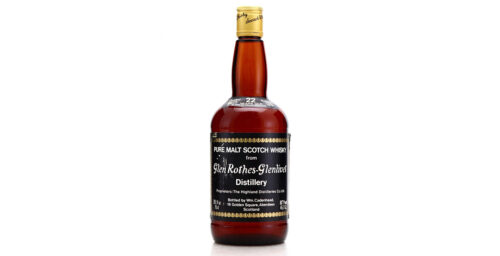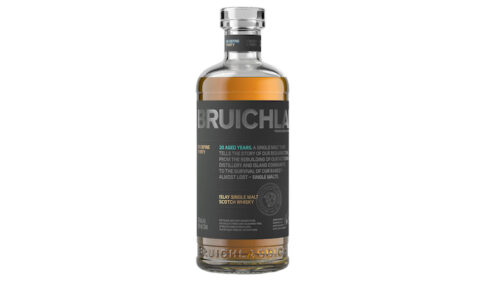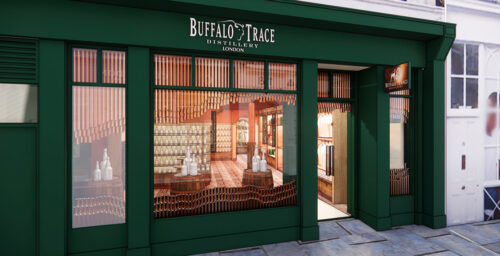No matter how hard Facebook may try, the whiskey secondary market isn’t going anywhere anytime soon—and whiskey scams are here to stay.
Bourbon’s rocket-propelled rise in popularity (and the endless sea of thirsty hands grasping for a rare, expensive bottle of Pappy) are here to stay—as are the whiskey scams and scammers that want to profit off of the chaos.
Let’s make this clear: there are people out there who know how desperate you are to get that bottle of Parker’s Heritage to complete your collection, snag a bottle of Pappy Van Winkle 23 for the bachelor party, or finally secure a bottle of Jackie Zykan’s new 117 release.
This is the nature of the secondary market. People are going to try to get what they want, even if the market is (technically) illegal. And for every person hunting for bottles, there’s a scammer hunting for a victim.
There isn’t much I can do to stop you, or to protect you. The market is as unregulated as it is unstoppable. But you can protect yourself with a little common sense, and a willingness to walk away when something doesn’t seem right.

Learning that instinct can take time and plenty of mistakes, and I’ve seen and heard plenty of swindled whiskey lovers lament their choices.
You’re never 100 percent safe trading whiskey, but there are some things you can do to protect yourself and take a statistical advantage against hoodwinkery.
Here are seven things to remember.
1. Never Pay More Than You Can Afford to Lose
Perhaps it seems cynical, but whiskey buying is a little like investing in the stock market, and with that comes a degree of risk. You may be fairly certain that the guy selling you a case of E.H. Taylor Rye is on the up and up, but a truckload of Rip Van Winkle 25 is likely too good to be true.
At the end of the day, a lot of unforeseen circumstances can mean that even authentic bottles never make it to your bar—confiscated or damaged or stolen packages included. FedEx isn’t going to replace that $4,000 bottle you illegally had shipped, so what’s lost is lost.
What I’m getting at here is that you should never pay a single dollar on the secondary market that you’d miss. It may keep you from finding your most coveted bottles, but it will also keep you from experiencing a financial tragedy.
2. Never Buy in Private Messages
Buy-sell groups conduct all of their business in the group thread for a reason: witnesses. Sure, you may have stiffer competition for the bottles you want, but that’s the price you pay for some degree of herd protection.
One of the scammer’s tried and true methods is looking for failed sales in the group thread and DMing the losers with a great offer. “Hey man, that bottle you wanted, I’ve got one. Can give it to you for the same price.”
The offer may be tempting. The whiskey may be calling to you. Don’t take the deal. Without a public record, nobody can help you if the potential scammer decides to take your money, delete his account, and disappear in the wind.
If you want this bottle, tell the guy to post it in the group chat, and you’ll snatch it up. If he flakes, you’ll know why.
3. Get References
Whether you’re trading in a Facebook group, a Discord server, or just among a group of loose connections in a text thread, don’t buy from a complete stranger.
How do I define “complete?” Well, If I know a guy who knows the guy, then we’re fine. If I know a guy who knows a guy who knows a guy, now my confidence is starting to wane.
The specifics of this rule may be subjective—who I consider trustworthy stops after the first introduction. But what you really need to do here is use your instincts. If you don’t believe the guy’s legit, walk away.
4. Avoid Stock Photography
Buying whiskey on the secondary market is a little like joining a dating app: the other person is always trying to look more attractive than they are. The same goes for whiskey buying on the internet.
Don’t get cat-fished.
Anyone who advertises a bottle with stock photography is a big red flag—if they can’t show you a candid photo of the bottle, they probably don’t have it. A scammer will do a lot of clever things to defraud you; don’t make it this easy for them.
5. Too-Good-to-be-True Prices are Always Too Good to be True
The price of a good bottle of whiskey goes up month over month, and sometimes week over week. If the bubble bursts next Tuesday, we’ll let you know, but until then, assume that anyone trying to let a bottle go for a bargain may have ulterior motives.
Yes, there are exceptions to this rule. I’ve seen plenty of guys trying to let things go for $10 or $20 less than market value. Sometimes, a guy will knock $100 off of a $2,000 bottle in the right circumstances. But that’s about as far as it will ever go.
If someone is offering you something at half price, it’s either fake, or stolen, or doesn’t exist at all. People who flip whiskey aren’t stupid—people who buy flipped whiskey though… we usually are.
And while we’re at it, the same advice goes for motivated sellers. This is a seller’s market, and has been for several years. If somebody looks eager, they may have questionable reasons—you may not want to get involved.
6. Don’t Buy Pappy
We know, we know. Why else would anyone leap into the dark world of the secondary market except to get one of the world’s most coveted bourbons?
The thing is, Pappy is overpriced, and has been for half a decade. Whether you agree with us or not, the scammers know this. They know there aren’t enough bottles to go around.
I’ve seen faked foil seals, I’ve seen refilled bottles, I’ve seen impressive forgeries. It’s amazing how much work someone will put into a fake whiskey bottle for $3,000, and you have to remember that.
When that much money is on the line, people will custom print labels and seals. They’ll change barcodes and adjust liquid color. A good Manhattan lawyer may bill at $500 an hour. These guys can spend a few workdays making believable counterfeits and still turn a nice profit.
If you absolutely must buy Van Winkle, do everything you can to ensure authenticity. Demand receipts, ask for references, have someone who knows more than you assess photos of the bottle.
You may look paranoid, you may come across as tedious, but there’s one thing you won’t be: an idiot who paid three grand for a dressed-up bottle of repackaged Jim Beam White Label.
7. Just Try a Pour of It Instead
With all the talk of owning and collecting bottles, we sometimes forget that not everything lives up to the hype, Whether it’s a new Booker’s Batch or the latest Michter’s Toasted Barrel, you may want to temper that desire to possess a full bottle until you’ve actually tried it.
Finding a good watering hole may save you money not just because you’ll avoid potential whiskey scams, but you may learn in a half ounce that you don’t want a full bottle. Even at the highest priced bar, you’ll probably save yourself some cash. And you might just learn that it’s more fun to make friends with a bartender than a UPS driver.








